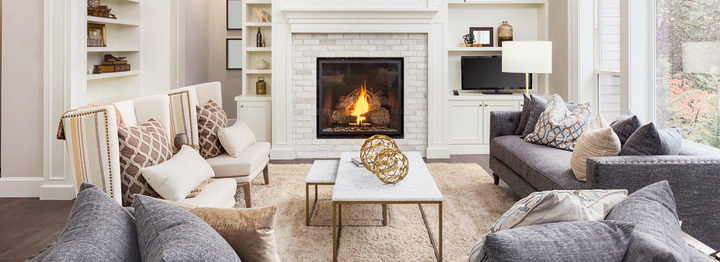
Decorating a home is a very personal endeavor. Every individual has unique tastes and the right to decorate their home in any way that they see fit. But as much as interior design is a creative expression – a form of art, per se – there are also certain principles that work better than others. And if you walk into a dozen random homes, chances are, they all violate at least a few interior design best practices.
Very few homes have interiors that are worthy of being featured in a designer magazine, but it’s not the expensive furniture and exotic taste that disqualifies most homes. In the vast majority of cases, it’s simple little decorating mistakes that cause designers to squint in disapproval.
Here are some of the most common decorating mistakes homeowners make – as well as some quick fixes and simple suggestions for correcting them.
Light fixtures are one of the first design elements a person notices when they walk into a home. Good or bad, it’s hard to miss hanging fixtures. They take up a lot of visual space and are typically hung in areas that get a lot of traffic. Unfortunately, many homes have cheap, basic light fixtures that do nothing but detract from the overall look and feel of the rest of the house.
If you’re going to spend some money on something, make it nice light fixtures. If you look around, you can find some nice fixtures at fairly friendly prices. Don’t be afraid to make a statement. Unique textures and color can give a tired space a fresh look.
The days of having a living room set with the same fabric are gone. Too much matchy-matchy fabric makes your décor look cheap and tired. Instead, pick a color scheme and choose pieces that fit into it. By mixing things up, you create some visual relief and a sense of originality.
We get it – you’re going for a minimalist look that’s sleek, modern, and simple. But since when did this mean your décor has to be lifeless and cold? It’s okay if the predominant color scheme in your home consists of whites, greys, and neutrals, but be sure to occasionally introduce some fresh pops of color. Throw pillows, area rugs, and artwork are three ways to splash in a little color without overwhelming the space.
It’s considered a big interior design no-no to paint a room without first testing the paint color.
“Always, always take the time to sample—whether you’re painting a foyer, kitchen, or basement—to see how the colors appear in the room,” says Erika Woelfel, vice president of color and creative services at Behr.
When you go into a paint store and shuffle through the little 2×2-inch samples, you’re really only looking at a suggestion of what the paint color could be. The sample can’t account for your walls, the color underneath, the lighting, and other elements that impact the way paint finishes.
For best results, paint at least one 24-inch square section of the wall and observe it throughout the day to account for changes in lighting. If you’re satisfied, you can then paint the entire room.
Naturally, most people are focused on the look of furniture when shopping. However, comfort is equally important. Just because something looks nice, doesn’t mean it’s nice to sit on. And if you end up with lots of expensive, yet uncomfortable furniture, you’ll find that you have a house that’s tasteful, yet not functional.
If you’re shopping for furniture online, make sure you read reviews or test out the piece in person before buying. If you’re shopping in store, bring the whole family along to get multiple opinions.
There are three basic types of lighting in a home: ambient (general lighting), task (for a specific purpose), and accent (used as part of the décor). Too much or too little of one type of lighting can leave your home feeling a bit off. And one of the common mistakes homeowners make is using too much overhead lighting.
While overhead lighting serves a purpose, too much can be harsh and alarming. For starters, all overhead lighting should be on dimmer switches. It should also be used quite sparingly. Eye-level task and accent lighting create much-needed balance.
Even the simplest piece of art can add character to a room. However, many homeowners don’t know how to hang art. The most common mistake? Hanging art too high.
“It’s almost like you have to crane your neck to really see the piece! Not good at all. Many people go by the rule of thumb to hang pieces ‘eye level’, but if you’re tall then that may be a bit too high,” one designer notes. “On the flip side, we occasionally see people hanging pieces way too low. But honestly, we’d rather see a piece too low on a wall than too high.”
Area rugs can add some texture and visual relief from an otherwise solid-colored floor. But rugs can also be expensive. This leads some homeowners to skimp and buy area rugs that are too small for the space. Unfortunately, small rugs make a room look cheap and wimpy.
“Use as large a rug as works for your budget (and as is appropriate for your room), but if your rug must be smaller, pull your furniture up to it so that at least two legs of the furniture fits onto the rug,” Homedit suggests. “Ideally, the rug will touch all the furniture.”
At Green Residential, we take pride in home ownership. Whether you’re looking to buy, sell, or invest in rental property, we can guide you through the process from start to finish. For additional information on any of our services, please contact us today!
